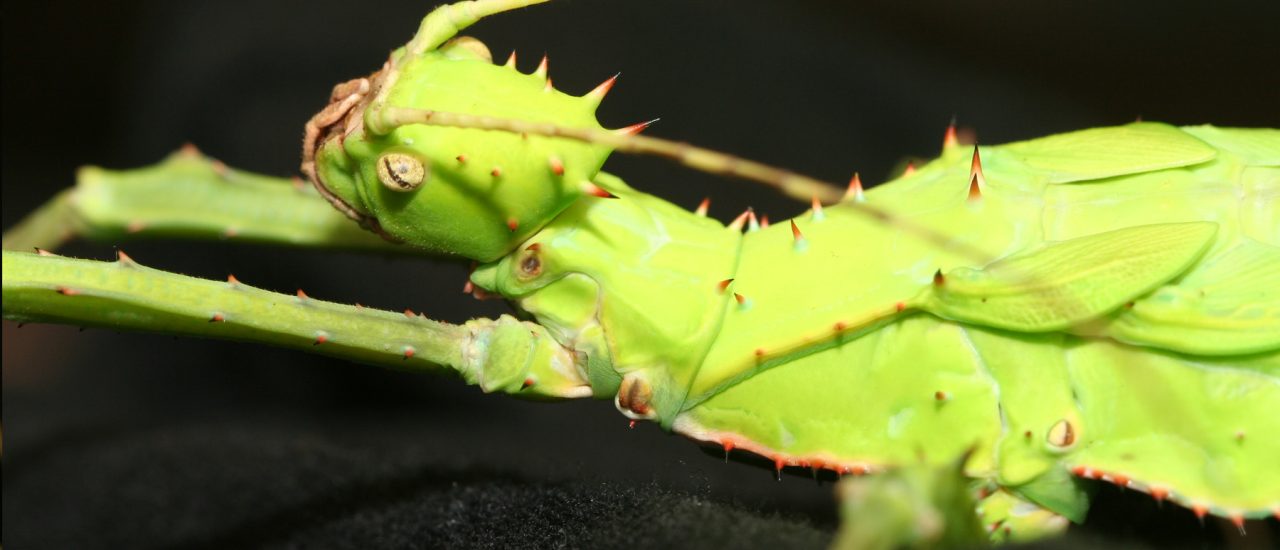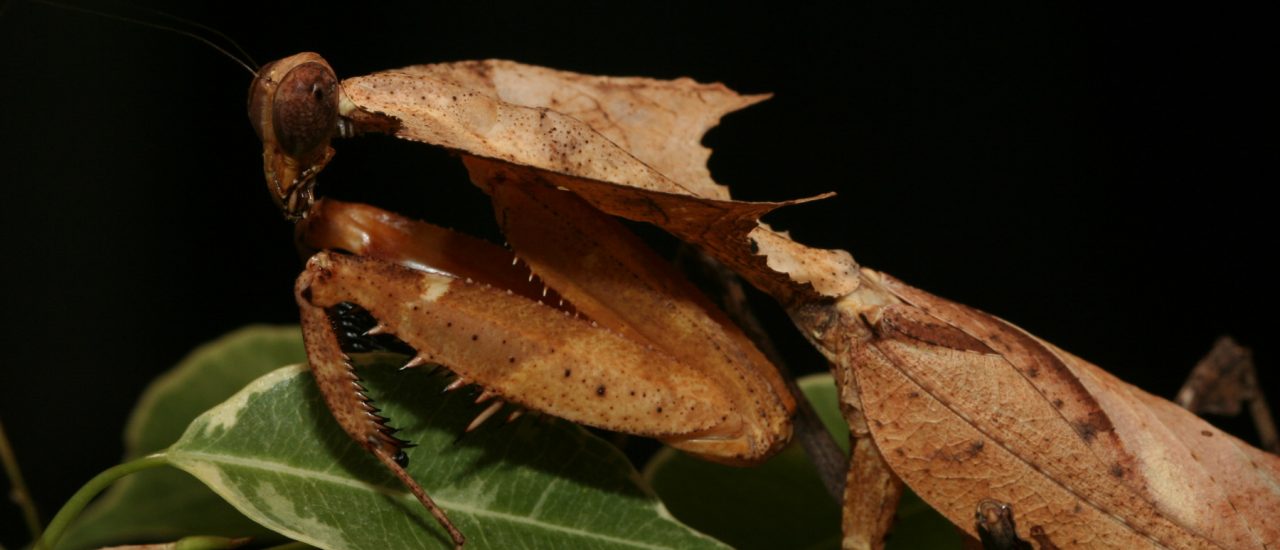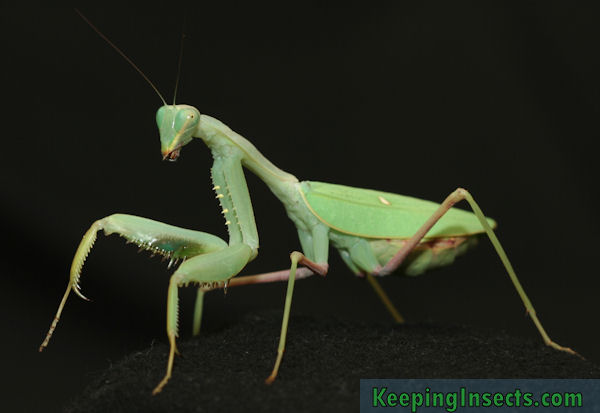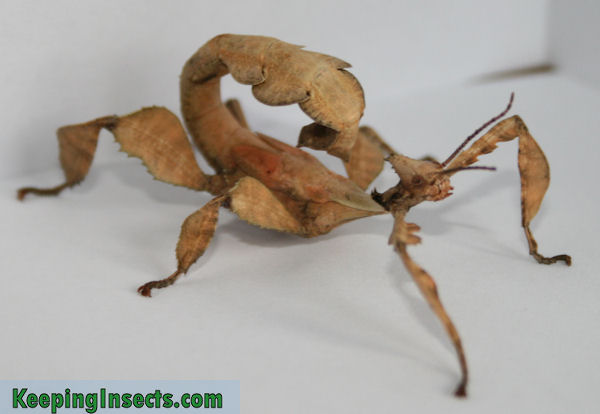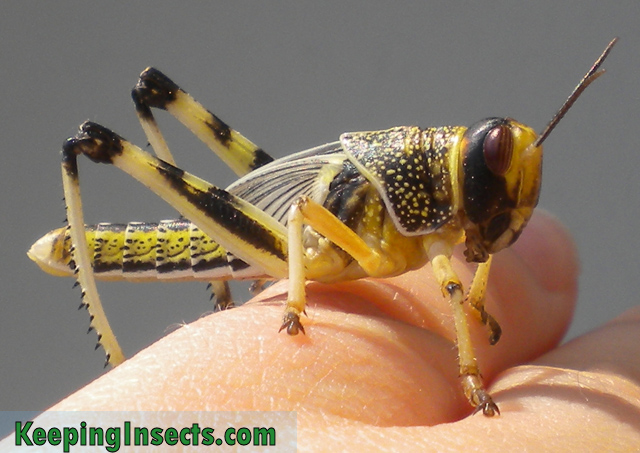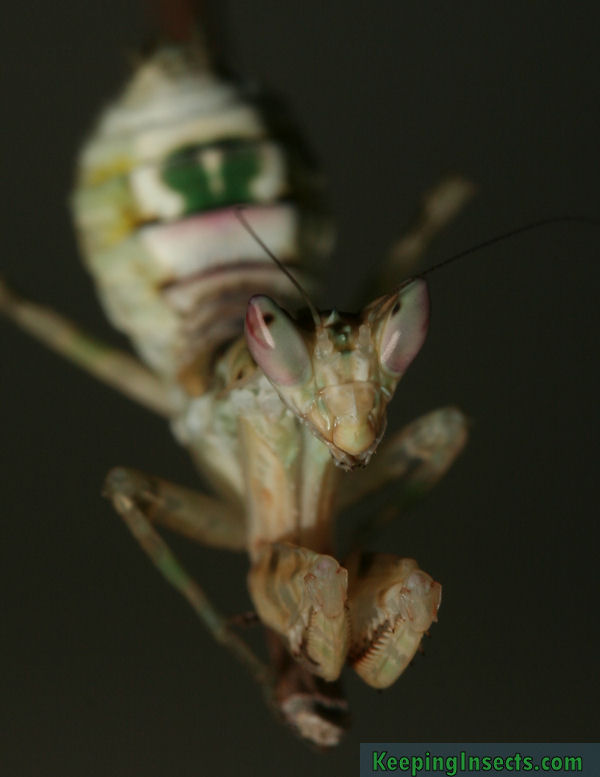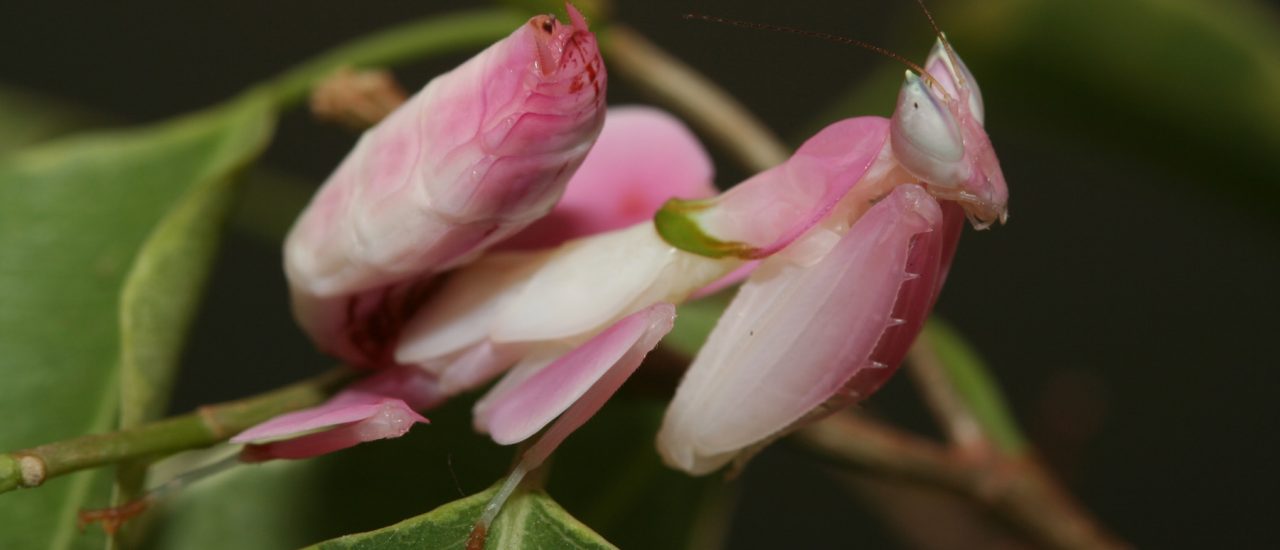
It’s time to visit the Monarch Butterfly
You probably know the Monarch Butterfly. Either you have seen it yourself, or you have seen one of the hundreds of pictures, drawings or commercials featuring this butterfly. It’s a beautiful bright orange butterfly with jet black markings and a few white accents on its wings.
It’s most famous for its migration. The Monarch Butterfly flies from the United States and Canada all the way to Central Mexico. The migration happens in August and October. This means the butterflies are arriving at their overwintering sites in Mexico around now. Why don’t you visit them? It’s something you will never forget. The butterflies can be found in Mexico between mid October until mid March.
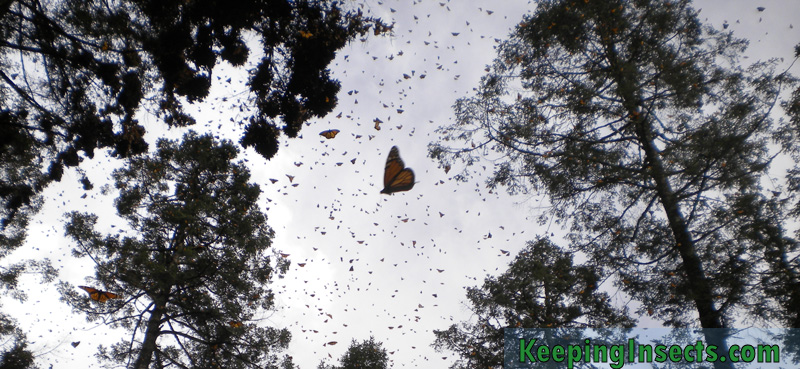
Sierra Chincua Butterfly Sanctuary
If you are visiting Mexico you should definitely stop by at the Monarch Butterfly Natural Reserve. To see millions of butterflies flying all around you is a truly amazing sight. You can see the butterflies in the area close to the city Morelia.

Morelia is in the center of this map, left from Mexico City (Ciudad de Mexico)
Want to read more about nature tourism at the Monarch Butterfly reserve? Read our page about the Monarch Butterfly.
Taking care of a wild praying mantis
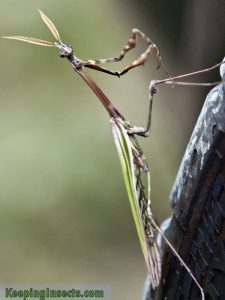 Many people email me with questions about a praying mantis they have found in their garden, patio, shed or in their house. A wild praying mantis has found its way into the house through an open window or door and decided it’s a good place to stay. A mantis can survive pretty well inside the house if there are enough flies or other bugs to eat. If not, you can better release it back outside to the garden or a park.
Many people email me with questions about a praying mantis they have found in their garden, patio, shed or in their house. A wild praying mantis has found its way into the house through an open window or door and decided it’s a good place to stay. A mantis can survive pretty well inside the house if there are enough flies or other bugs to eat. If not, you can better release it back outside to the garden or a park.
But what if you want to keep your praying mantis as a pet? Especially when the temperatures start to drop it can be better for the mantis to live as a pet than to stay outside. The natural way of live for a mantis in countries like the USA or Europe is to die in fall when the temperatures drop and prey becomes scarce. As a pet, with enough food, a nice temperature and proper care a praying mantis can live well into winter.
To get you started I collected some interesting articles that I wrote for you.
- Caring for a praying mantis
Tips on setting up their housing, feeding, providing water and making sure the temperature is OK. - What food to get for your praying mantis
A praying mantis only eats live insects as food. You can collect them in nature or buy them. - Providing air humidity and drinking water
Humidity is extremely imporant for a praying mantis. It needs water to drink but also needs air humidity to stay healthy.
That are the basics for taking care of a mantis. Now your have found your mantis, you might also be curious if it is a he or a she. You can try to figure that out using our guide Male or Female Mantis?
Common Praying Mantis Species in the United States
Then the species. There are so many mantis species, which one do you have? Or at least, if you cannot find the exact species, you would like to know what kind of mantis you have. I will try to help you out with showing the most common species in the USA.
Is it an European Mantis?
An European Mantis is green or brown, has a “classic mantis” shape and has some striking dots and colors on the inside of their front arms. An European Mantis can be found all over the USA thanks to being introduced there from Europe. It can also be found in the Southern and Eastern countries of Europe. Do you thing you have found an European Mantis? Check the European Mantis page out to know for sure.
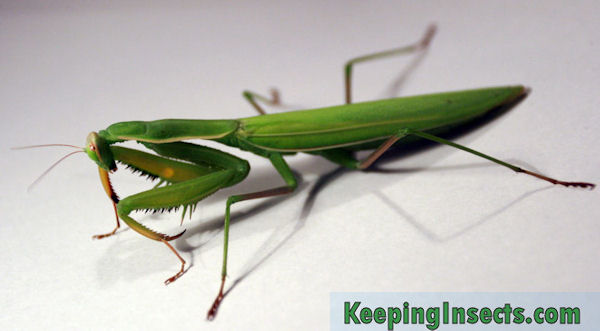
European Mantis female – green version
Is it a Carolina Mantis?
A Carolina Mantis can be found all over the United States, not just the state of Carolina. It is a very common mantis in the USA and also occurs much further south, all the way to South America. A Carolina Mantis can be green or brown in color, the male is much smaller than the female. The female has wings that only reach to half its abdomen, making it look very different from other mantis species. Check out the Carolina Mantis page if you think you have found a Carolina Mantis.
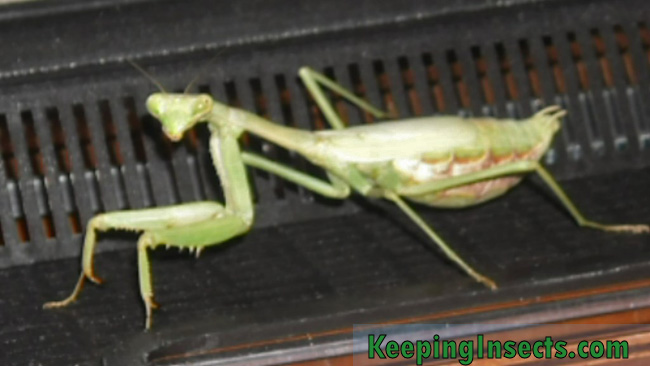
Carolina Mantis adult female
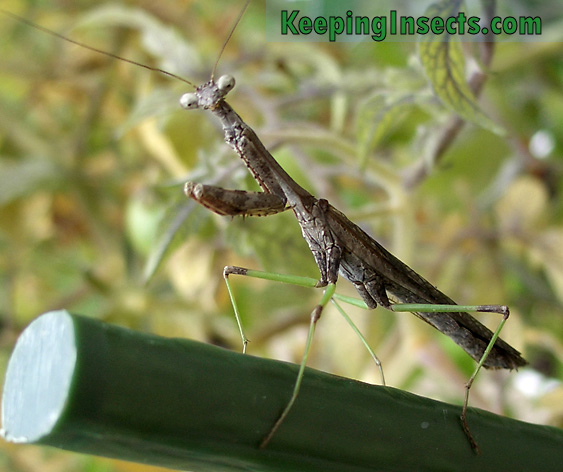
Carolina Mantis adult male
Is it a Chinese Mantis?
A Chinese Mantis is also pretty common in the United States because it was released there as a pest control agent. It can be green or brown in color and looks pretty similar to the European Mantis. An imporant difference is that the Chinese Mantis does not have any coloring inside the front arms. It just has an uniform bland color without yellow, black or white spots. Do you think you have found a Chinese Mantis? Nice! Check out our Chinese Mantis page to know for sure.
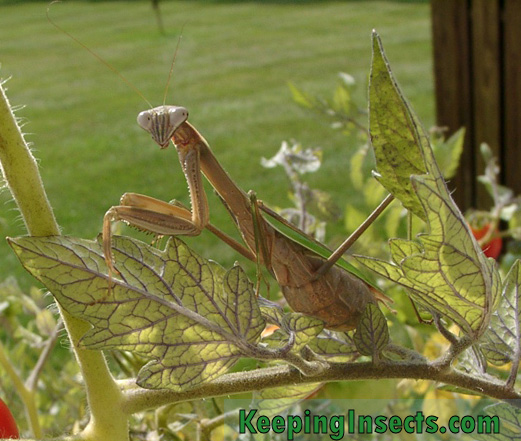
Female Chinese Mantis
Is it an Unicorn Mantis?
The Arizona Unicorn Mantis or Pseudovates arizonae is a very special mantis species that is not found easily. It occurs naturally in the United States and Canada but is most common in the state of Arizona. I will show you a picture, if you have seen it you will know for sure you have found an Arizona Unicorn Mantis.
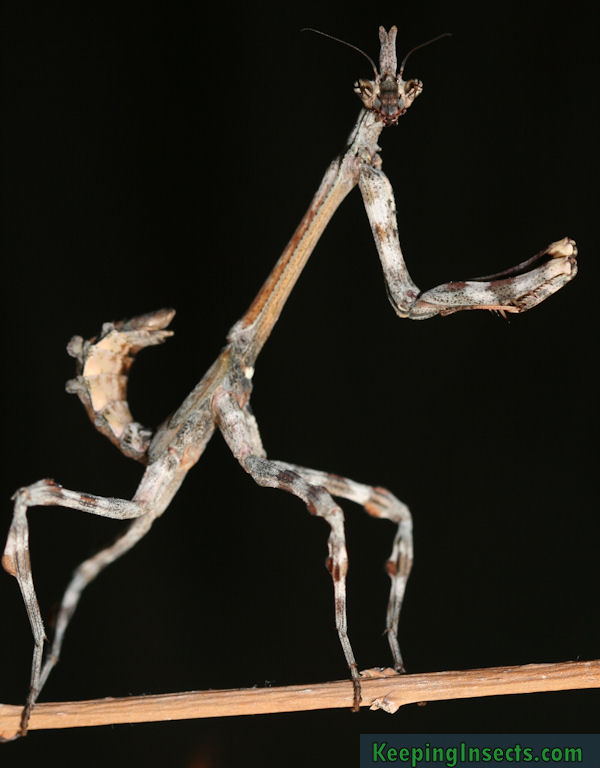
Not yet adult Arizona Unicorn Mantis
Which mantis species did I find?
Cannot find the description of a mantis that looks like the one you found? Send me a message with picture! I will try to figure it out for you. You can also check our Mantis Species page.
Top 5 mantis species for beginners
If you like insects and especially praying mantises, keeping a mantis as a pet can be a lot of fun. It will give you time to study the mantis better, watch it grow and develop, make amazing macro pictures of it and observe its hunting behavior. But which mantis species is suitable for someone who never kept insects as pets?
What is the best mantis species for beginners?
Not every mantis species has the same needs. Some species are easy to keep because they can live in a wide variety of environments: its not easily too cold or too hot and they are not as sensitive to air humidity and food quality. Other species are very picky and won’t thrive if you are not on top of their precise requirements. If you are just starting out as a beginning insect keeper, it is hard to be on top of all the details. You have to check so many things, it can be overwhelming.
So for beginners I would advice praying mantis species that:
- Are easy too keep because they don’t require too much special care
- Are big and calm so they can be easily handled
- Are easy to find in the pet trade
So, which species do I recommend for beginners? Here is the top 5 mantis species for beginners:
Still there are new mantis species being discovered
You would expect we would know the earth and what lives on it by now. But that’s not the case, there are still new species to be discovered. Last year a new mantis species has been discovered in Rwanda, Africa. Not even a previously know species in a different area or country, but a new species alltogether.
Scientists found it in Rwanda’s mountainous Nyungwe National Park. This species got the name Dystacta tigrifrutex, a name inspired on a bush tiger. The researchers found out that the female of this mantis hunts like a tiger. They claim it does not sit and wait until a prey walks by, but actually walks around untill it stubles upon a prey insect. It will then approach carefully and attack. Only the female has been seen showing this behavior, the male is much smaller and lives in the foliage. The female hunts on the ground.
The scientists found the new species by setting light traps. As described on my page here, a light trap is a white sheet on which strong light is pointed. At night all kinds of moths and other flying insects are attracted to the light and will land on the white sheet. One day a male of the new bush tiger mantis species landed on the sheet and was recognized as a new species. Later a female was found too. Luckily for the researchers she produced an ootheca which hatched dozens of nymphs. In that way they could observe all live stages of the new species of mantis and confirm that the male that was found was really the same species.
It makes me wonder how much is still out there… For the insect enthousiasts that want to breed or keep mantises, this species is not the best to be kept as a pet. It is very small and brown without any interesting extra features.
Source: http://entomologytoday.org/
Indian Flower Mantis
It’s time to showcase one of the mantis species. This time it’s the Indian Flower Mantis. The Latin name for this species is Creobroter gemmatus or Creobroter pictipennis. Both species are very similar, making it difficult to determine which species you have. For breeding it matters with species you have, as they are unable to interbreed.
Read our caresheet of the Indian Flower Mantis to learn more about this species.
More full size pictures of the Indian Flower Mantis? Click Continue Reading.
Is it a wasp? Is it a mantis? No, it’s…
a mantis fly! The Latin name of the family is Mantispidae.
It took me a couple of looks to figure out what this creature is. It looks like a mantis, but not quite right. Its head, its antennae, the upright single set of wings and the way the front arms fold don’t make sense for a mantis. The colors make it look like a wasp, but that is just mimicry. By looking like a wasp it discourages predators to attack it they have learned that wasps sting.
A mantisfly or mantidfly is related to lacewings. Its only very distantly related to a praying mantis. The shape of the front legs has developed separately in mantids and mantisflies, making it a nice case of convergent evolution. Both groups of species have developed the raptorial front legs as a way to catch prey. Apparently this “design” is the most functional for insects that catch prey using their vision and their front legs.
Check out the video to know what I’m talking about.
Meet the Wandering Violin
Ever heard of the Wandering Violin mantis? It’s a mantis species that has a bizarre body. It has a normal head and abdomen, but in between there is a huge stretch of body that only serves as camouflage. It breaks up the normal body shape of an insect, making it harder for predators to recognize this mantis as a tasty bite. The rest of the body is also very well camouflaged.
Check out more about the Wandering Violin Mantis on it’s own page.

Subadult male Wandering Violin Mantis
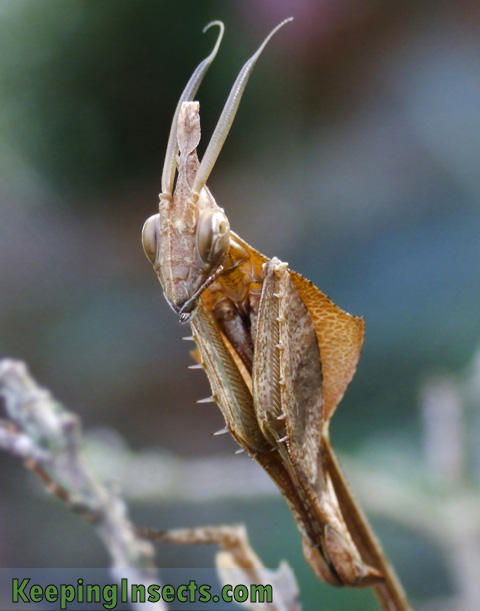
Wandering Violin subadult Male
New mantis species added to this website
I added a new page to the website, it’s about the Chinese Mantis. It is a very common mantis in the United States. It also occurs in China and other parts of Asia. Right now, in the fall, this mantis species can be found as adults in the United States. The females are depositing their eggs. When first frost arrives the adult Chinese Mantises will die. The species continues as eggs. Next spring the eggs will hatch and populate gardens and field with young mantis nymphs. I received some beautifull pictures of a Chinese Mantis from Robert Smith. He made the pictures in his potted garden where a wild female Chinese Mantis took residence. She is beautifull and already produced one egg sac. 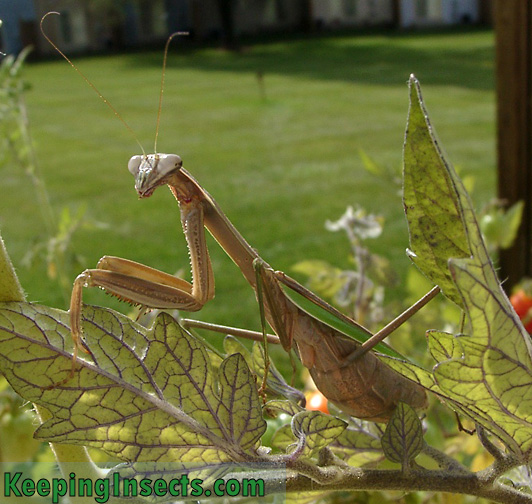
- Adult Chinese Mantis
- A wild female Chinese mantis eating
Does a praying mantis bite?
Many people ask me: “Does a praying mantis bite?” or “Can a praying mantis bite me?”. Well, it can, but it likely won’t happen.
A praying mantis will bit only when:
- It’s big enough to bite you, a mantis that is shorter than 2 inches won’t be able to bite you.
- It thinks your finger is a prey
A praying mantis does not bite to defend itself against people. If it shows that it feels threatened by assuming a defense posture (called deimatic display behavior) you should leave it alone to calm down.
It once happened to me that my mantis bit me. I had been away for the weekend and came back home to my mantises. It had been a bit warm that weekend and the mantises were thirsty. I took out one of the mantis older nymphs and let is walk on my finger. Then it felt the moisture on my skin, it bent down to drink. Mantises do this all the time when they are thirsty and they will not bite. But this time for some reason it saw my finger as a prey item and quickly used its front arms to catch my finger. The spikes on the arms hurt a bit, but immediately it also started to bring its head to my finger to take a bite! Ai, that hurts! I waved my hand up and down until the mantis lost grip and landed somewhere on the floor.
I think only the large mantis species that tackle big prey could possibly bite, for example the Giant Asian Mantis, African Mantis or European Mantis. The species that are smaller or eat mostly flies are not willing to attack a large prey like a human finger.
Do you want to read more about keeping a mantis as a pet? Read Caring for a Mantis. Do you want to know all the different species of mantis? Use the menu on your right!
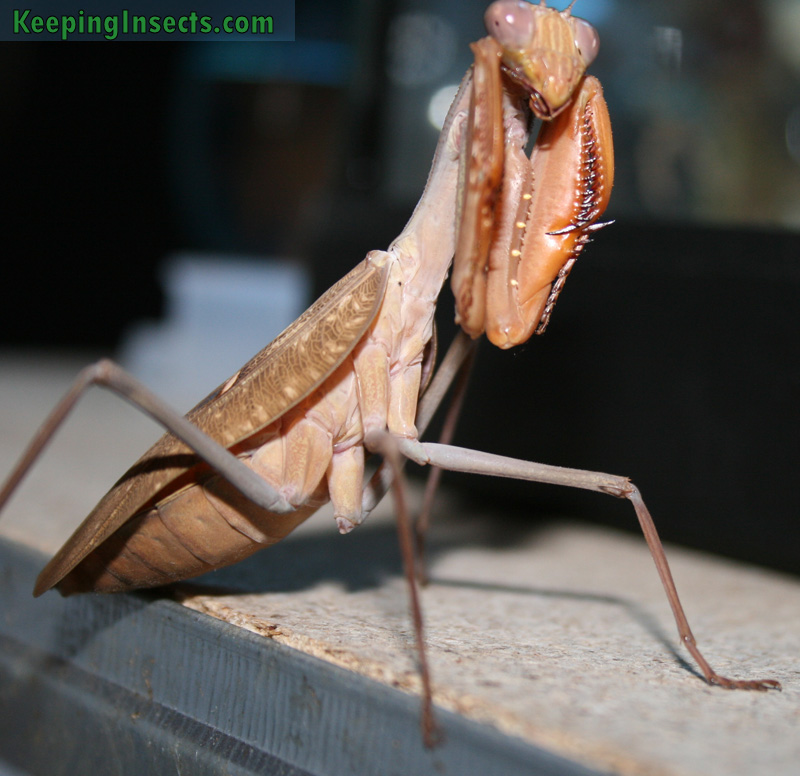
African Mantis adult female – brown variant
Nice horns, honey
How about a stick insect species in which the female has horns? Meet the Annam Stick Insect. Adult males are just boring with a smooth skin and thin body. But the females, no! They look like they are made of wood and have two funny horns at the top of their head.
You can read all about this species and how to keep it as a pet on the Annam Stick Insect page.
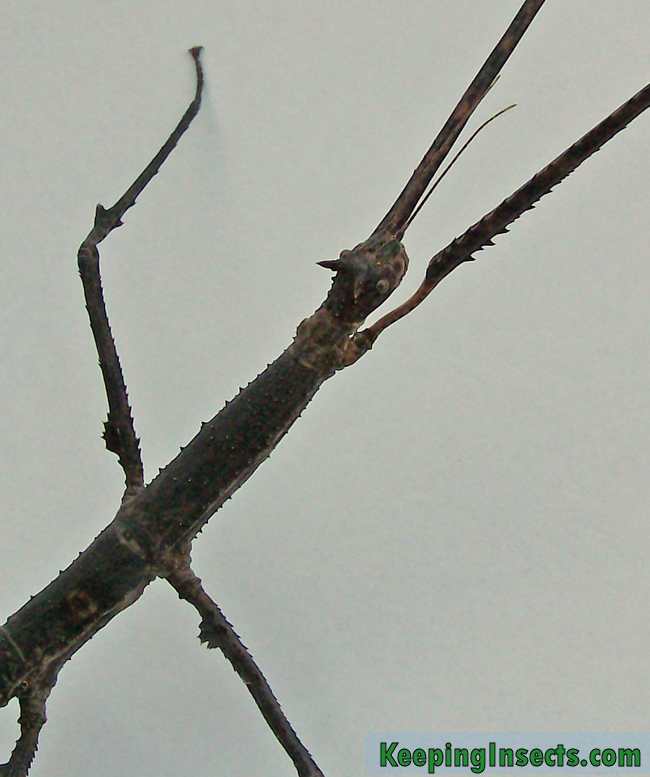
Adult female Annam Stick Insect

